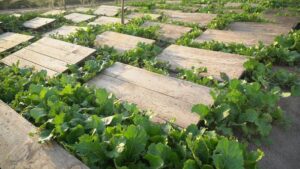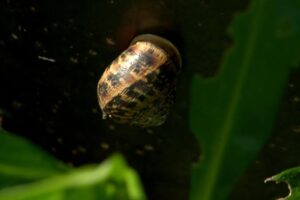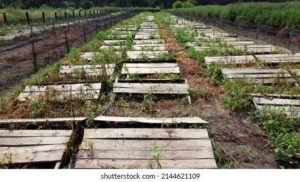How to Start Snail Farming in Ghana: Welcome to the captivating world of snail farming, where the lively rhythm of Ghana’s agricultural landscape blends in with the leisurely pace of these mollusks. We take a kind look at the craft of heliciculture in this extensive guide, which also shows you how to start your own snail farming operation in the heart of West Africa.
Ghana offers an ideal environment for raising these hardy animals because of its rich biodiversity and pleasant climate. We’ll examine the financial potential of snail farming while also highlighting its humanitarian nature as we work our way through its complexities. For snail farming to be sustainable and morally right, it is essential to comprehend the symbiotic relationship that exists between the farmer and the environment.

This guide is your road map to starting a prosperous snail farm, from choosing the ideal species to building a habitat that resembles their natural habitat. Come explore the mysteries of ethical snail farming with us, where each discovery demonstrates our dedication to the welfare of these fascinating animals as well as the success of Ghana’s agricultural sector.
Recommended: Highest Paying Accounting Jobs In Germany
What is Snail Farming?
Heliciculture, or the farming of snails, is a new agricultural endeavour in Ghana that has great potential for producing food and revenue. Achatina achatina, also referred to as the Giant African Land Snail, is one of the many snail species that is best suited for snail farming in Ghana because of its market demand, quick growth, and adaptability. With an emphasis on Achatina achatina, we will explore the detailed methods of snail farming in this extensive guide, offering helpful advice for those who wish to pursue this exciting new venture in Ghana.

The large land snail species Achatina achatina, which is native to West Africa, is ideal for snail farming in Ghana. It grows quickly—it can reach a marketable size in six to twelve months—and can get quite heavy. Achatina is a highly sought-after commodity in both domestic and international markets, renowned for its delectable taste.
Recommended: Best loan apps in Nigeria
Snail Housing and Enclosures
For snail farming to be successful, enclosures and housing must be built appropriately. Achatina achatina needs a roomy, safe pen with a shaded area to keep the snails safe from harsh weather and predators. To ensure proper ventilation and escape protection, the pen should be built out of materials like wire mesh or wood. Examine the pen frequently to find and fix any possible openings for predators.

Soil Preparation and Substrate
Rich, well-drained soil is ideal for Achatina achatina growth. Clear the area of rocks, debris, and weeds to prepare the soil. To enhance drainage and aeration, loosen the soil. To improve soil fertility, incorporate organic matter, such as compost or decomposed leaves, into the soil.
In order to provide an appropriate environment for snail growth, motility, and egg laying, the substrate in the snail pen should be a blend of soil, sand, and organic matter.
Feeding and Nutrition
Since it is essentially a herbivorous animal, Achatina achatina needs a balanced diet to grow as best it can. Serve them a range of crisp, leafy vegetables, including pawpaw, cabbage, lettuce, and cocoyam leaves. To further assist shell development, serve foods high in calcium, such as crushed eggshells, limestone, or oyster shells. Make sure the snails have access to clean water at all times.
Moisture and Humidity
Achatina achatina’s health depends on the snail pen’s moisture content being kept at the proper levels. In order to avoid dehydration and encourage the development of their shells, snails need a humid environment. Especially in the dry seasons, mist the snail pen with water on a regular basis to keep it humid. To avoid excessive moisture, which can result in fungal infections, keep an eye on the moisture levels and make adjustments as needed.

Pest and Disease Management
Diseases and pests can pose problems for Achatina achatina. Reduce the risk of illness by putting preventive measures in place like routine pen cleaning, debris removal, and ensuring adequate sanitation. Keep an eye out for pest activity and take quick action to control infestations. If necessary, seek advice from veterinarians or agricultural specialists to identify and handle any potential health problems.
Breeding and Reproduction
Every Achatina achatina snail has both male and female reproductive organs, making it a hermaphrodite species. A balanced male-to-female ratio in the snail pen is necessary to promote breeding. In the pen, make little, damp spots where snails can lay their eggs to provide them with appropriate nesting places. Before moving the eggs to another container with ideal hatching conditions, keep a close eye on them. For a successful incubation of eggs, maintain the proper temperature and relative humidity.
Snail Care and Growth
Regularly check on the health and growth of the snails. Eliminate any leftover food or waste to keep the pen clean. Assist their growth by providing an appropriate environment that is the proper temperature and humidity. Make sure the snails have adequate room to roam around and flourish as they grow.
Harvesting and Marketing
When a snail reaches the ideal size and weight, it is ready to be harvested. Achatina achatina can grow to a size that is commercially viable in six to twelve months, depending on the feed and environmental factors. Harvest the snails by carefully handling them so as not to break their shells. Arrange them according to weight and size.
Investigate a variety of marketing avenues to connect with prospective customers when it comes to snail sales. Grocery stores, restaurants, lodging facilities, and local markets are excellent places to start. Form alliances with wholesalers or distributors who can assist you in reaching broader markets. Make use of social media and internet channels to advertise your snail farm and attract more customers.
Starter Tips for Snail Farming in Ghana
Before beginning your endeavour, thoroughly investigate the market demand and snail farming methods.
Secure Farm Site: To guarantee your snails’ safety and well-being, choose a spot that will cause them the least amount of disturbance and defend them from predators.
As you gain expertise and understanding, start with a manageable number of snails and progressively increase.
Invest in High-Grade Stock: To create a solid basis for your farm, purchase disease-free and healthy snail stock from reliable vendors.
Ensure effective management by maintaining thorough documentation of all costs, sales, and breeding cycles.
Reduce the likelihood of illnesses and pests by practicing good hygiene and routine sanitation.
Use appropriate harvesting methods to provide the highest quality products while reducing stress on snails.
Maintaining the proper humidity and temperature will help to create an environment that is favourable for mating and egg laying.
Keep yourself updated about the laws and licences that apply to snail farming in your area. To prevent legal problems, familiarise yourself with and abide by Ghana’s regulations pertaining to snail farming.
Create efficient marketing plans, such as an online presence, to draw in potential clients and a larger audience.
Join networks or associations dedicated to snail farming to hear from seasoned producers and remain current with market developments.
Conclusion
Snail farming holds great promise for generating income and food in Ghana, particularly with the Achatina achatina species. Beginner farmers can begin a successful snail farming endeavour by following the comprehensive instructions included in this lengthy guide. Important factors to take into account include species selection, housing and enclosures, feeding and nutrition, controlling moisture, managing pests and diseases, breeding and reproduction, and effective marketing strategies. Ghanaian snail farming has the potential to be a rewarding and prosperous business venture with persistence, best practices, and dedication.
 Skip to content
Skip to content



Very interesting info!Perfect just what I was looking for!Raise your business